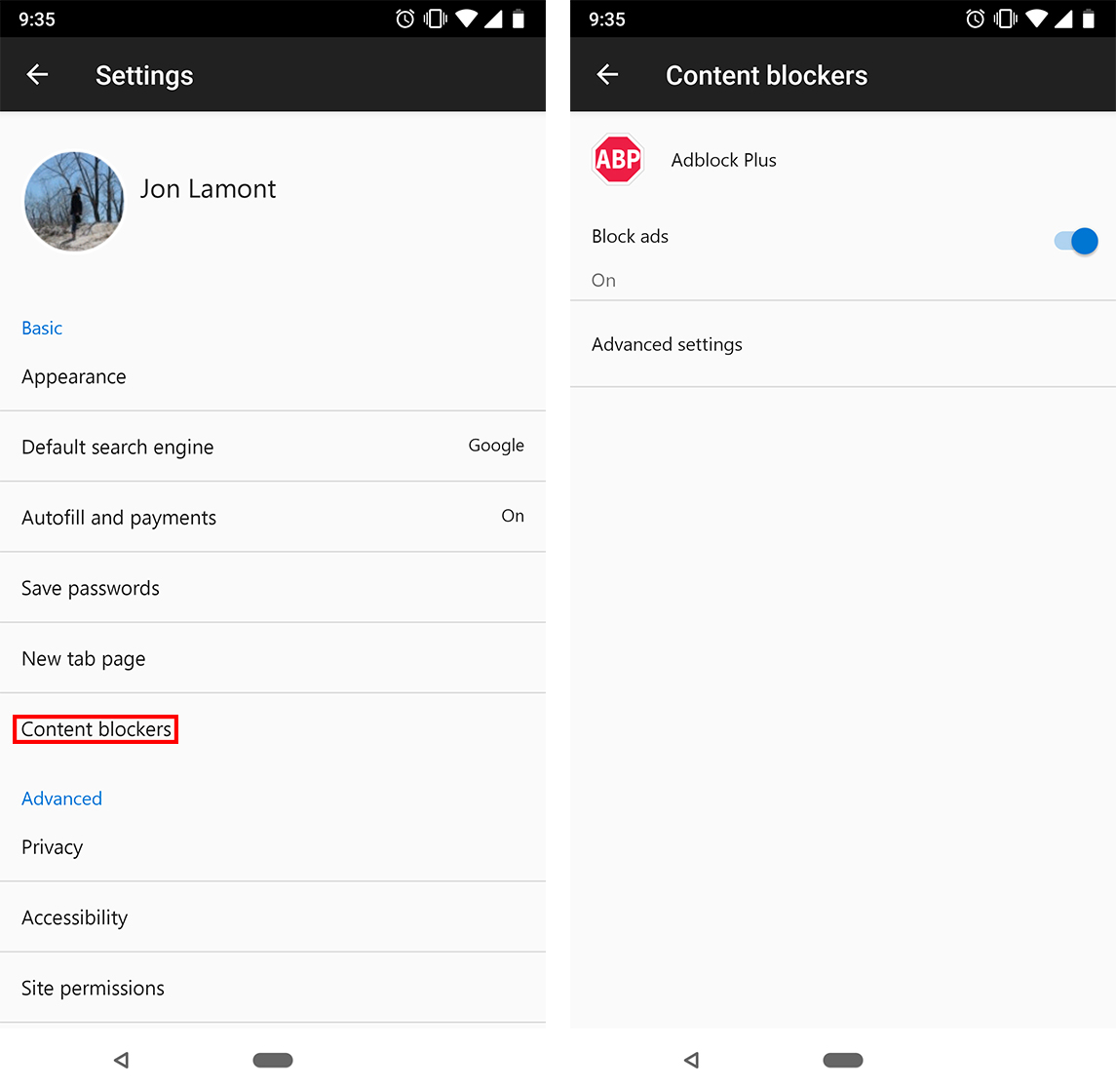
Microsoft added adblocking directly to its Edge browser for Android and iOS over the weekend.
The new feature is showing up in the Edge Android beta as well as an iOS test program. The feature will roll out to more users soon, according to Microsoft.
The app now incorporates popular adblocking extension Adblock Plus directly into the Edge browser. It doesn’t work as an extension like on desktop. Users running the test can turn on Adblock by opening Edge’s Settings and tapping Content Blockers.
How Edge stacks up to the competition
Microsoft is following tech giants like Google and Apple, which have both implemented a degree of adblocking to their respective browsing apps.
Google added an ad-filter to the company’s Chrome browser earlier this year. The search giant’s adblocker is based on bad ads. It uses the Coalition for Better Ads’ standards to determine if a website uses annoying ads like full-screen pop-ups or ads that auto-play sound and video. Google notifies the website owner of violations. However if the owner doesn’t change ads within 30 days, Chrome begins blocking ads across the site, not just the bad ones.
Apple announced it’s new anti-tacking Safari features at WWDC 2018 as well. While Apple’s ‘intelligent tracking prevention’ is designed as a way to prevent companies from using cookies to profile users. Much of the current online advertising market relies on cookies — little chunks of data downloaded from websites — to build and maintain a profile of users across webpages. Ads target users based on these profiles. If you’ve ever noticed an ad ‘following’ you from website to website, that’s why.
Cookies were initially used to save important website data, such as login information, so that users wouldn’t have to reauthenticate every time they visited a webpage. However, companies like Facebook figured out how to use those cookies to persist across webpages and track what people are doing.
Apple’s move follows a similar anti-ad feature it added in 2015. With the iOS 9 update, Apple enabled content blocking extensions for Safari.
Microsoft’s adblocking in Edge takes a middle road. It isn’t as loose as Chrome, but it isn’t an assault on all ads like Apple. Adblock Plus in Edge allows ‘acceptable ads’ be default. The extension uses strict guidelines to block intrusive advertisements. However, users can turn this off if they don’t want ads at all.
Furthermore, this addition to Edge is fantastic for mobile users. Android users who wanted an more complete adblocking experience either had to rely on other browsers, or root their devices to do so.
Via: The Verge
MobileSyrup may earn a commission from purchases made via our links, which helps fund the journalism we provide free on our website. These links do not influence our editorial content. Support us here.



